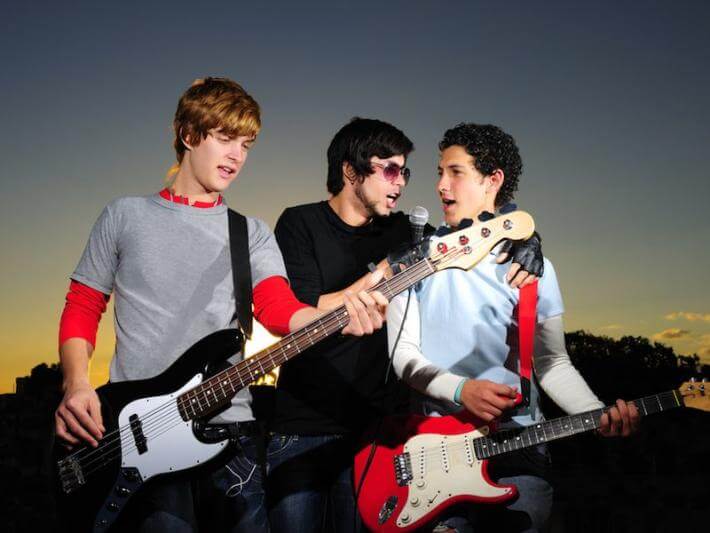‘Ban Together’ or ‘Band Together’?
Just as it’s hard to hear the D at the end of “used” in “used to” and at the end of “iced” in “iced tea,” it’s hard to hear the D at the end of “band” in the phrase “band together.”
Mignon Fogarty

The correct phrase is “band together.” Today we use it to talk about people joining together in groups, but it comes from the older idea of using a band to tie things together, like sticks of wood.
I’ve been hearing the phrase “band together” a bit more lately because some people are banding together to do good deeds even if they have to do it virtually or at a distance. And Allie from New Jersey also asked a long time ago whether the correct phrase is “ban together” or “band together” because you can tell if I say it fast, the D at the end of “band” can get lost.
To be clear, the correct phrase is “band together.”
When “band” is a noun, one common meaning is a group of people who have joined together for some purpose. In the 1800s it may have been a band of political compatriots or a band of travelers. Today, you can think of a rock band, the movie “Band of Brothers,” or the Silicon Valley investing group known as the Band of Angels.
Therefore, it’s not much of a stretch to remember that when people join together (for example, to form a band, the noun) they are banding together (using “band,” the participle).
This meaning actually comes from an older noun that described the kind of flat band you’d use to tie sticks of wood together or or stop bleeding from a wound—like a bandage.
According to the Oxford English Dictionary, the word “band” was first used to describe a group of musicians in the mid-1600s.
When did people start ‘banding together’?
Before people banded together, it appears they simply “bandied.” The Oxford English dictionary has examples from the late 1500s along these lines. For example, the oldest one reads, “Our enemies…conspire and bandy themselves against us” and the meaning is that they banded together against us.
Both “bandy” and the verb “band” seemed to have originally had a strong sense of being opposed to something.
One of the earliest example I could find describing a group of people as “banding together” in a positive sense was in a book from 1817 in which a group of women were described as “banding together’ to get some sort of subscription to help a religious book get published.
A little earlier than that, from court proceedings from a man on trial for treason in Surry in 1803, I found what seemed to be a slight precursor to the current meaning where the defendant was described as banding other people together in a society meant to harm the king, almost like you’d band together a bundle of twigs.
Around that same time, I found examples in which countries were described as banding together. For example, a Scottish document described it as a problem if England and France banded together.
Pronouncing the D followed by a T
Allie’s question about the spelling also reminded me of other common errors that happen when a word ending with D is followed by a word starting with T: For example, the correct phrases are “used to” (as in “I used to go to restaurants a lot”) and “iced tea” (as in “I would usually get iced tea with lunch”), but people sometimes think those phrases should be “use to” and “ice tea” because it’s difficult to hear the separation between the D and T.
If you find that interesting, you can read or listen to more about it in our piece on something called the alveolar flap. It’s the same reason that “ladder” (the thing you climb) and “latter” (the opposite of “former) often sound the same when people are speaking American English.
Quick and Dirty Tip
Remember that when you join other people to do something, whether it’s to form a rock band of deliver groceries to your neighbors, you are banding together.
Image courtesy of Shutterstock.

Print: Amazon, Barnes & Noble, Powell’s
E-book: Amazon Kindle, Barnes & Noble Nook, Apple iBook

